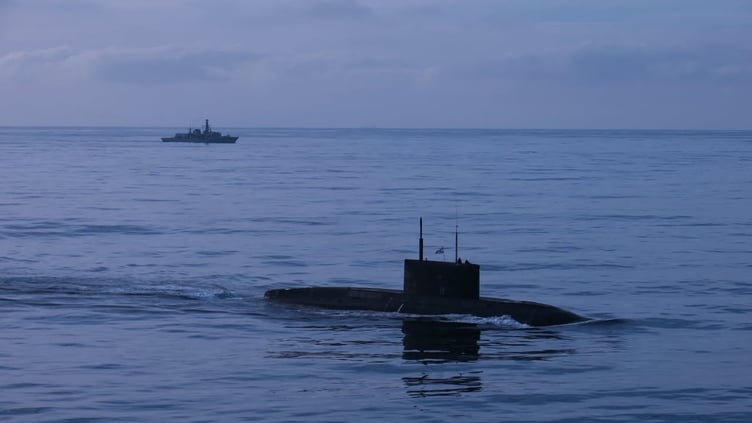The Plymouth-based frigate HMS Iron Duke monitored the surfaced Russian Kilo-class submarine Novorossiysk and its support tug Yakov Grebelsky near the French coast, close to the island of Ushant at the entrance to the English Channel.
Over the following 72 hours (from October 7 to 9), HMS Iron Duke, along with her Wildcat helicopter from 825 Naval Air Squadron, closely tracked and reported every movement of the Russian vessels as they transited through the Channel and into the North Sea.
The frigate then passed on monitoring responsibilities to a NATO ally.
The operation is part of the government’s ongoing commitment to safeguard the integrity of UK waters and protecting national security through the government’s Plan for Change.
Al Carns, Minister for the Armed Forces said: “Russian vessels have been passing through the English Channel more frequently and our Royal Navy is on the job 24/7, keeping a close eye on their movements to make sure our waters and undersea cables stay safe.
“This is a clear sign of how the UK stands strong with our NATO allies to push back against Russian aggression.
“The Royal Navy’s dedication and professionalism are absolutely vital for keeping the UK safe. The Government is fully committed to giving our Armed Forces the tools and support they need to keep us secure at home and strong abroad.”
The operation was part of a carefully coordinated allied effort, with 11 warships from six nations so far linking up to locate, track and handover duties, ensuring constant and unbroken monitoring of the Russians – in the face of challenging weather conditions.
It began in the Mediterranean Sea, with HMS Cutlass of the Gibraltar Fast Boat Squadron shadowing Novorossiysk – which spent time dived and on the surface during her voyage – through the Strait of Gibraltar, before NATO warships took up the tasking until the entrance to the English Channel.
There, Iron Duke was waiting once more to watch the Russians – the ship’s second such operation in the space of two weeks and her 19th in the last year, as the submarine continued her journey towards the Baltic Sea.
Commanding Officer of HMS Iron Duke, Commander David Armstrong, said: “A surfaced Russian submarine will always focus the mind.
“This operation was characterised by teamwork. Spanning an extended period, and complicated by severe weather and a Kilo transiting both dived and, on the surface, it has involved 11 surface units from six partner nations – likely more by the time it concludes it voyage.”
She plays a key role in protecting our nation’s interests, from policing vital trade routes to supporting humanitarian aid missions.
Led by Commander David Armstrong, as a Type 23 frigate, HMS Iron Duke was originally designed to hunt Soviet submarines.
Since the end of the Cold War, the role of the Royal Navy’s frigates has evolved and they are now seen as the core of the frontline fleet.
As well as taking part in Royal Navy warfighting exercises and working alongside fellow NATO nations, HMS Iron Duke is also involved in regular patrols across Northern Europe and the Baltic, where her crew engages with regional forces and provides security at sea.





Comments
This article has no comments yet. Be the first to leave a comment.